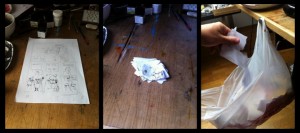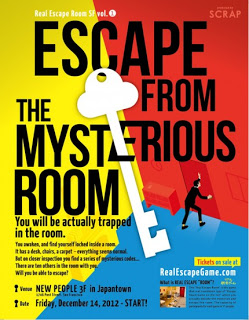interview for Brooke
March 21, 2013

Would you recommend entering the art field for professional work?
That’s not something anyone can recommend. You’d have to feel it yourself, not be lured by someone else.
you can’t choose this field of career. it chooses you.
Would you recommend going to school for art?
Not necessarily. I didn’t attend an art school. Hence they didn’t shape me using their own definition of what an artist is.
being an artist is very personal and schooling can damage that. Not always, but there’s a risk.
Did you complete any schooling?
I graduated from a university, I’m an architect.
Did you always know you wanted to become an artist?
No. even when I already was I always hated that term. I didnt want to be an artist. I always considered myself a craftsman. But as years went by it turns out I actually am an artist, however admitting to that is cringing.
Can you name any artist/artists past or present who has influenced you directly, or whom you admire?
Hugo Pratt, Wada Che Nanahiro, Amanita design, Regis Loisel, Enki Bilal, Nicolas de Crecy and many many more.
How did you get to be where you are now?
Don’t understand the question. Hard work and commitment I guess?
How did you aspire to become an artist?
I didn’t. Aspiring to be an artist is the first step to NOT becoming one.
What helped you realize this career would be best for you?
I didn’t realize that. I still don’t know what would be the best career for me. That’s the whole point.
How should an artist approach developing a style that is commercially appealing?
No idea. I guess try to do something that will please everybody. Which is like the opposite of being an artist.
Tell me about your style. Do you find that to be ‘commercial’?
Have you seen my style? it’s so far removed from being commercial that I can’t even see the path in this dark daymare forest that would lead me to a commercial highway.
How has your style progressed, and how have you improved?
Uhmm…. How it progressed? By repetition. You wouldn’t believe what years of training can do for an ungifted person, which is what I consider myself to be.
Do you mostly do digital art or traditional art, why?
There’s just an artificial separation between these two. I do my comic books the traditional way, because there’s no way to get watercolour to look remotely real using digital tools. And I do my games the way of the digital, because there’s no way to do that fast enough the traditional way. Both sides of that coin complement each other, I’m glad I found two separate outlets to cultivate both.
Do you work from life, or from photographs or from imagination?
1. imagination.
2. photos, but only when I need something concrete to look realistic enough.
3. from life? No, that’s for the proper artists.
Which is more important to you, the subject of your piece, or the way it is executed?
The subject is the most important thing in all form of storytelling, whether that be games or comic books in my case. The execution is just fancy clothes.














 Online gaming is going through a renaissance, with hundreds of websites offering free games to while away the time. One company making waves in the sector is Pastel Games – a Polish game developer responsible for such hits as the Submachine series and the Squirrel Family games. WBJ.pl speaks with company founders Mateusz Skutnik and Karol Konwerski about their their business model, the state of the industry and developing for the iPhone.
Online gaming is going through a renaissance, with hundreds of websites offering free games to while away the time. One company making waves in the sector is Pastel Games – a Polish game developer responsible for such hits as the Submachine series and the Squirrel Family games. WBJ.pl speaks with company founders Mateusz Skutnik and Karol Konwerski about their their business model, the state of the industry and developing for the iPhone. an interview by Igor Hardy.
an interview by Igor Hardy.